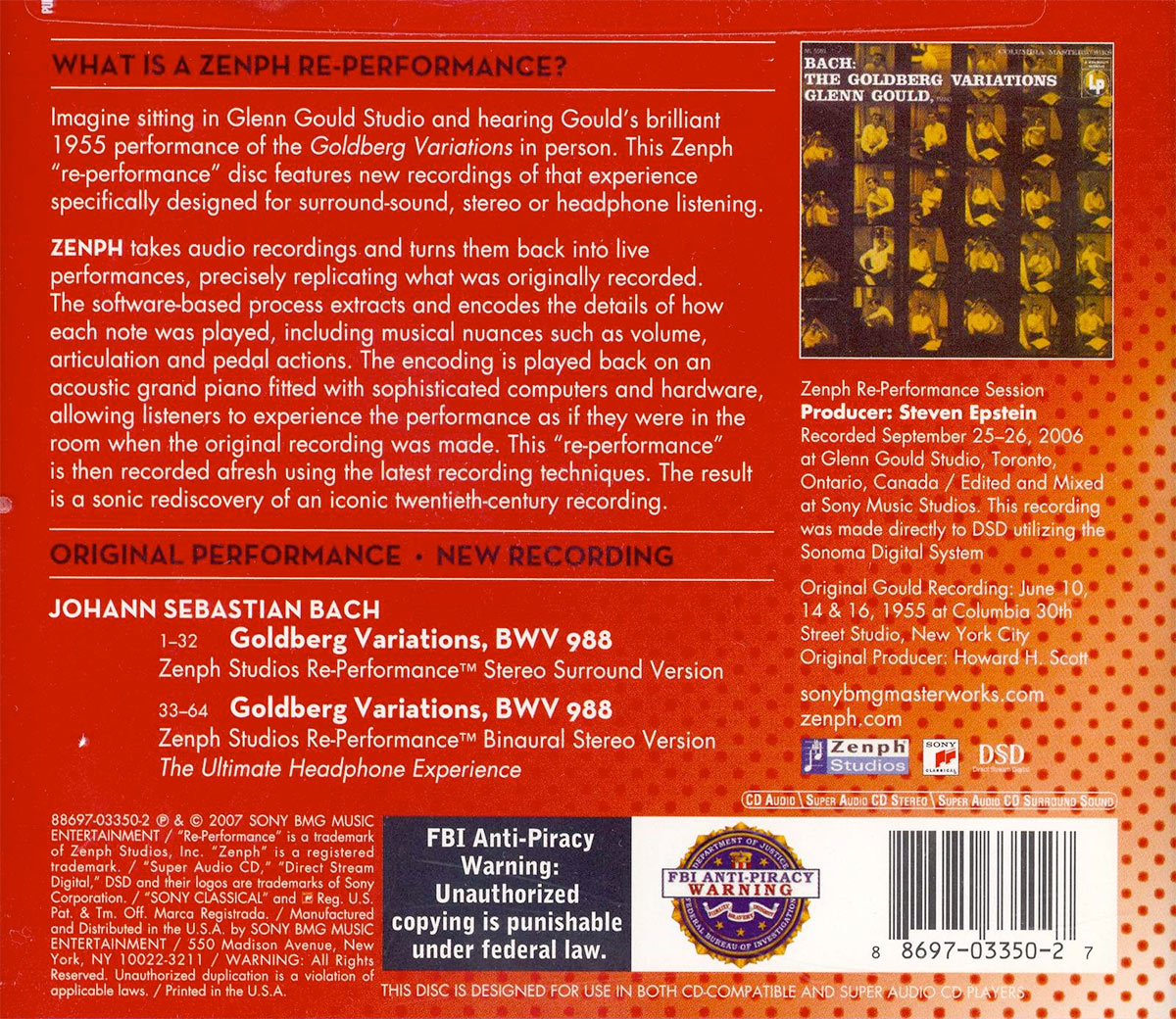:text-bump:
Reading this guy's blogs on a daily basis can get a bit trying, but every once in awhile he comes out with (for me) something really interesting. Here he talks about a company/software that can analyze a solo piano recording, and "MIDI-ize" each note (precisely recording the timing and velocity of every single note) and then using that data to replay the piece under much better conditions (great piano, nice hall, Hi-Res recording). He mentions a recording of Rachmaninof playing Rachmaninof put out by Sony that I think I want to track down (in this case the performance was stunning but the recording was poor; this technique allows you to beat that problem:
As I sat in my university office this morning, I bumped around a few websites after doing a search on high-resolution audio. It's still rather disconcerting that so many writers are hanging on to the HRA company line and writing pieces that are confusing at the best and outright incorrect at worst.
However, I did find an interesting comment on the topic of restoration and re-releasing older masters. The writer stated, "the only way to get a real high-resolution audio recording of an older master is to have mechanically-played instruments recreate an original performance and re-record what they produce". This is brilliant...but of course, impossible. Or is it?
I can tell you that it's already been done (at least with piano)...and with tremendous success.
About Zenph Sound Innovations
Zenph creates revolutionary technology that opens new possibilities for music listening and interaction. The company has developed a fundamentally new method of encoding music as performance data rather than audio. This performance data is easily transformed in a number of ways, enabling users of Zenph products – professionals, hobbyists, students, and listeners – to participate in compelling, interactive musical experiences. The company’s re-performance process was called “a technological miracle” by The Wall Street Journal and one of the “Best Ideas of the Year” by The New York Times Magazine. Zenph’s recordings have received multiple GRAMMY nominations, and its Rachmaninoff Plays Rachmaninoff album on Sony Masterworks was described by the editor of Stereophile Magazine as “perhaps the finest piano recording I have heard.”
Mechanical musicians? How about a player piano...but not just any player piano but one that has practically infinite dynamic resolution and control over pacing and tempo. After all, piano are made up of a bunch of switches (the keys) and three pedals right? How hard could it be to automate them? Actually, not that hard at all. We've had player pianos...even expression pianos for well over a hundred years!
The innovation that Zenph added was to consider a recorded piece of music not as acoustic sounds but as data. For those of you involved in synthesizers or computer music this might sound familiar. It's called MIDI (Musical Instrument Digital Interface) and it records performances as data rather than the acoustic energy coming from a soundboard or vibrating string. When a pianist hits a middle "C" on the keyboard, a set of data emerges from the mechanism and is delivered to a sound generator or a computer that records it. The information includes the note number, the intensity level (how fast the key was depressed) and the timing of the key press and release.
zenph_gould_back
Figure 1 - The back of the Zenph Innovations re-performance of Glenn Gould's "Goldberg Variations" [Click to enlarge]
That's really all you need to know. So Zenph came along and analyzed Glenn Gould's debut 1955 recording of Bach's Goldberg Variations. They figured out the precise timing and the dynamic level of each note, the use of the pedals and the balance of each vertical sonority from the original recording. This is their performance data. And then they sent the performance data back to a computerized version of a player piano using an ultra high-resolution form of MIDI. Presto! When they hit play, the sound coming from the piano is "an exact replication" of the original performance buy Glenn Gould. This is the "new" performance that is needed to re-record in high-resolution audio.
It's brilliant, really. Not only can they (in collaboration with Sony Masterworks) capture the "re-performance" with state-of-the-art equipment (although being SONY they released it using DSD 64) and issue it on CD and in 5.1 surround. The Glenn Gould was given all sorts of awards and put Zenph Innovations on the map.
I'm a friend of Dr. John Walker, the guy that came up with this approach. It turns out the copyrights can be refreshed and the recording of the Bach is heard without Glenn's squeaky piano bench, singing and the occasional subway train that is heard during the sessions. I was so impressed that I make available the Zenph productions on the iTrax website. You should check out the "Rachmaninoff plays Rachmaninoff" in 5.1 surround.
But how far can this idea go? The last time I spoke to John, they had raised some serioius funds and were working on building a mechanical acoustic bass and a set of drums. Then they fell off my radar. When I looked at their website today, everything seems a few years out of date. I don't think John is involved anymore. But the original idea was brilliant and as far as making new piano recordings of older performances, it was very successful.
This isn't a way forward for most classic recordings…but it did amaze a lot of people with Gould, Rachmaninoff and Peterson.
Botch here. I'd be really curious to learn how this software could precisely measure the loudness of every note in, say, a forte chord (of course the explanation probably would fly right over my head, too...) 
